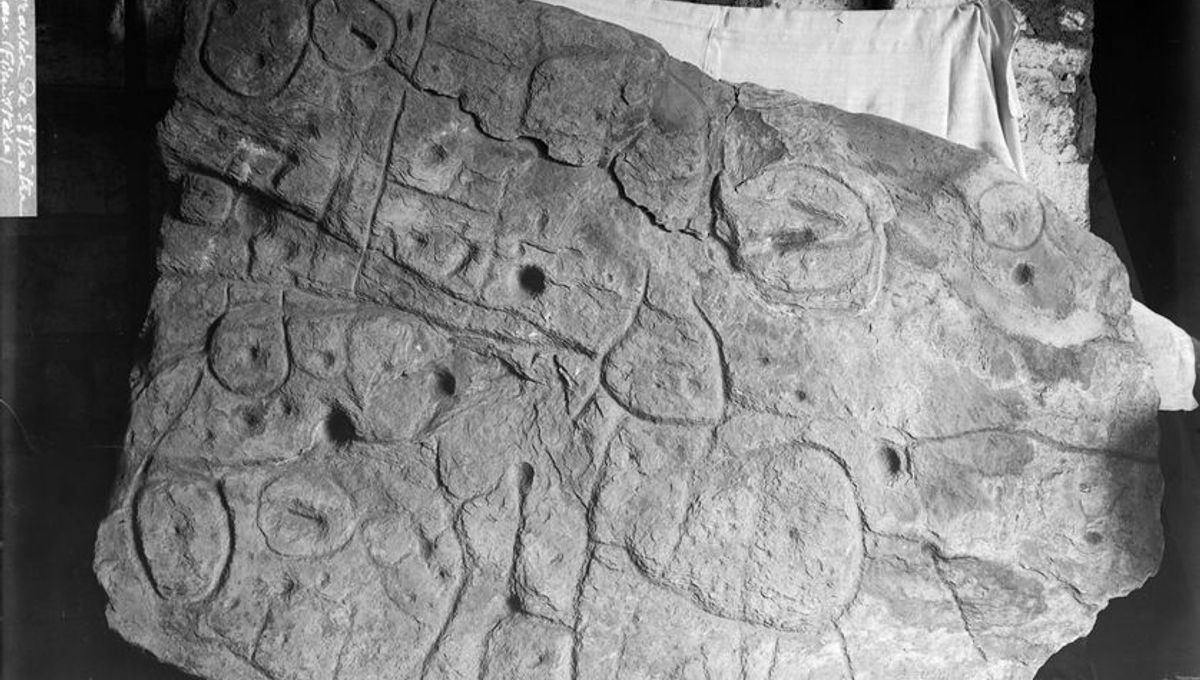
Researchers in northern France have been examining a Bronze Age rock and its mysterious markings in the hope it will point to similar ancient discoveries. It may sound like something from an Indiana Jones plot or Tomb Raider game (though presumably with less violence), but this ancient slab may turn out to be a veritable “treasure map”.
The stone, which is known as the Saint-Bélec slab, was originally discovered in 1900 by local archaeologists during a dig at a prehistoric site in Finistère, France. However, the slab then disappeared for over a century and was not rediscovered until 2014.
The slab includes various unusual etchings, which archaeologists believe represent features of the Odet River and its valley. According to their assessments, the markings bear an 80 percent similarity to an area around a 29-kilometer (18-mile) stretch of the Odet. As such, in 2021, the Saint-Bélec slab was recognized as Europe’s oldest 3D map.
Since then, archaeologists have tried to decipher its cartographic markings to locate other Bronze Age sites and monuments.
“Using the map to try to find archaeological sites is a great approach. We never work like that,” Yvan Pailler, a professor at the University of Western Brittany, said in a statement.
These days, archaeologists tend to rely on sophisticated radar equipment and aerial photography to find potential sites of interest. In addition, the fickle force of luck also plays an important role in discovery, especially when it comes to locating archaeological sites in cities when new foundations are being built. But the Saint-Bélec slab is providing something different.
“It’s a treasure map,” said Pailler.
However, Pailler and colleagues are only just at the start of their treasure hunt. Despite its specificity, the team will need to survey the entire territory identified on the slab and then cross-reference the results with the markings. It is possible the whole process could take 15 years.
Unraveling the mysteries
When the Saint-Bélec slab was first discovered, the archaeologists did not really understand its significance. However, the experts who assessed it after its rediscovery in 2014 immediately recognized its potential.
“There were a few engraved symbols that made sense right away,” said Pailler.
In the coarse bumps and lines, the team could see the rivers and mountains of Roudouallec, which is part of the Brittany region – about 500 kilometers (310 miles) from Paris.
The slab also includes small, pocked hollows, which may point to burial mounds, dwellings, or other geological deposits. If these sites can be located, then they may lead to a flood of valuable archaeological discoveries.
In the meantime, Pailler and colleagues have returned to the site where the rock was originally discovered. They have already found other pieces of the slab that had broken off at some point in the distant past. It is likely they were broken off and used as a tomb wall, which could demonstrate a shift in local power dynamics within the contemporary Bronze Age settlements.
“The engraved slab no longer made sense and was doomed by being broken up and used as building material,” Clement Nicolas from the French National Centre for Scientific Research Institute (CNRS), added.
Source Link: 4,000-Year-Old Stone Is Treasure Map For The Ancient World